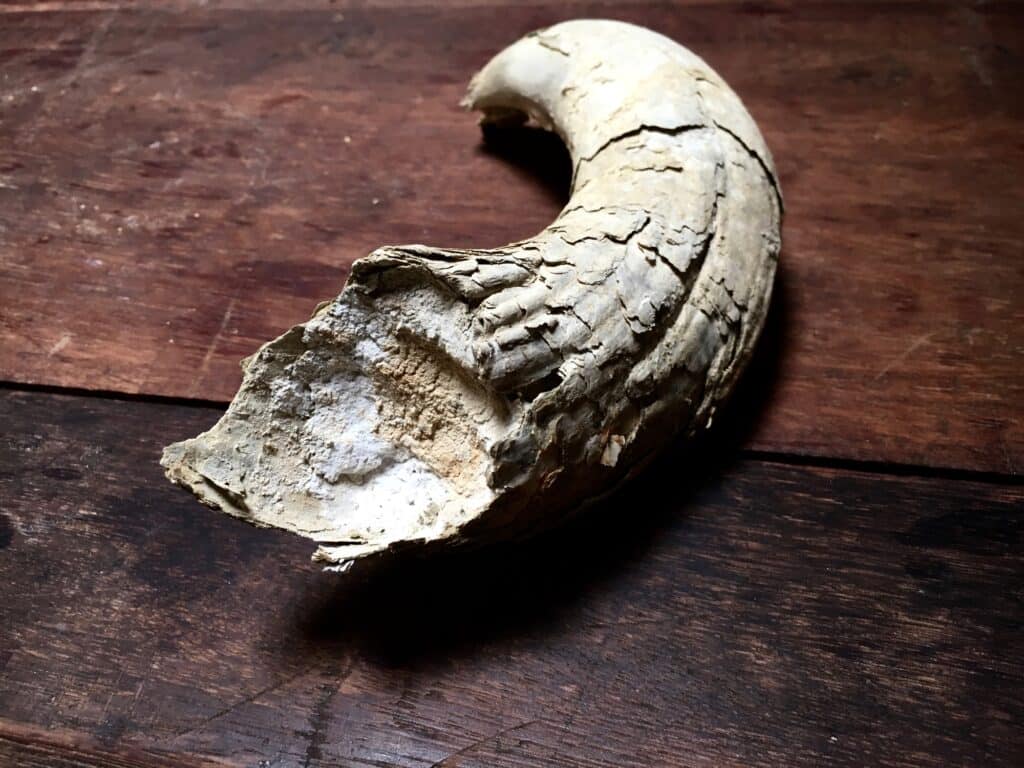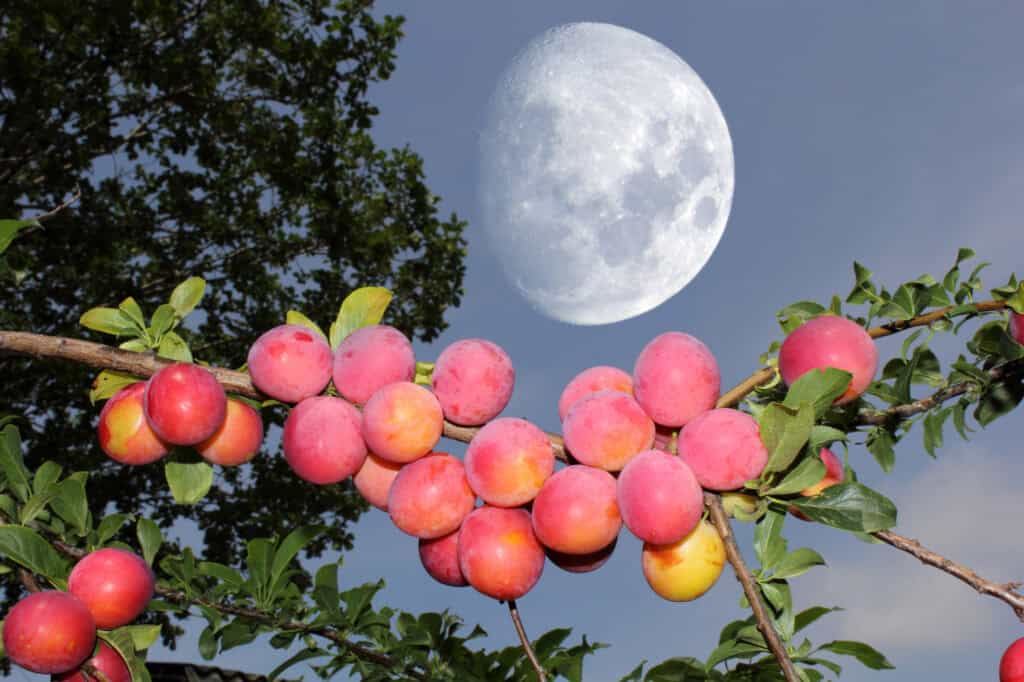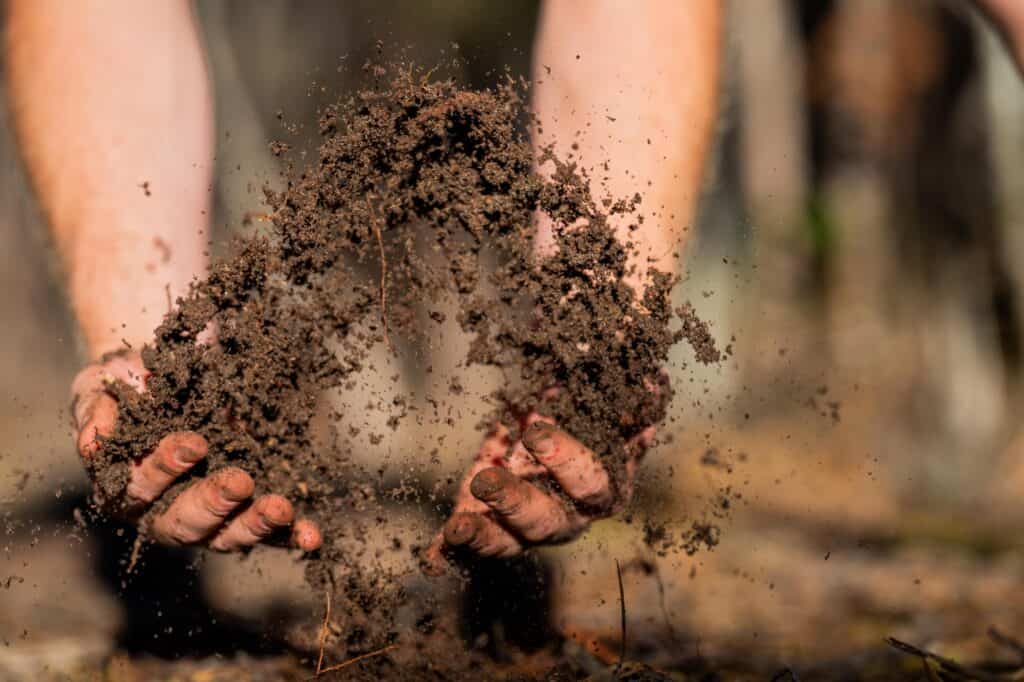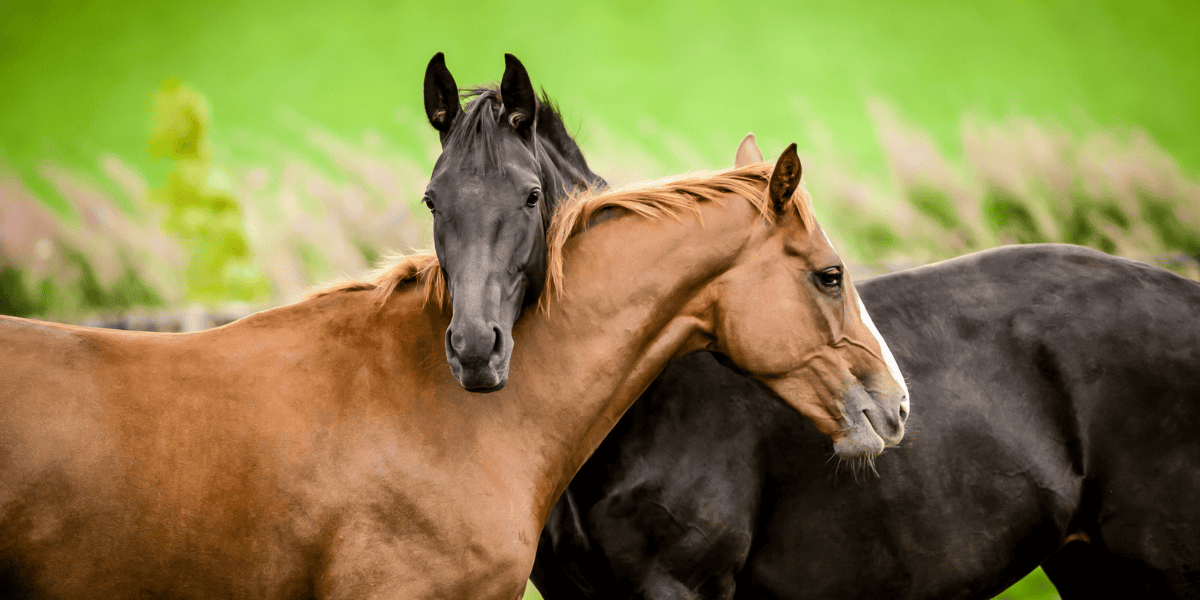“The future needs more active farmers and gardeners who consciously create an attitude of responsibility within themselves so that they become guardians of the soil and true friends of nature.”
~ Heinz Grotzke, author and professional gardener
Written by Tracy Reilly
Edited by Nicki Steinberger, Ph.D.
You can spot the term “organic” these days in everything from food and drink, to pet products, clothing, mattresses, and more. Yet a lesser-known farming method sits quietly behind the scenes, a practice known as biodynamic (BD) agriculture. As of 2016, BD farming comprised nearly 21,800 acres in the U.S.—a minuscule fraction of the estimated 900 million acres of total farmland in the country at the time. By 2023, compared to 17,445 certified organic farms, some 140 farms were certified Biodynamic. However, this accounts only for farms that have been certified, so it misses existing farms where biodynamic methods are used, but the farmers either haven’t sought or achieved official certification. Unlike organic farms, which can have certain fields or parts certified organic, Biodynamic certification requires the entire farm to meet its strict requirements.
The core premise of biodynamics is revealed in its name: bio, meaning life; dynamic, having to do with energy. But what does that actually mean? This type of agriculture views a farm as a living entity, ascribing value not just to the plants, but to the soil, compost, animals on the farm, and the people who work it. The principles of biodynamics were developed by Dr. Rudolf Steiner, an Austrian philosopher. Steiner shared his ideas of agricultural practices with German farmers in the 1920s. This was after they expressed growing concern about the sustainability of their soil from using chemical fertilizers. Steiner’s focus was not just the health of the soil, but plant and animal health, as well.
His premise of the farm as a “single, self-sustaining organism that thrives through biodiversity, the integration of crops and livestock, and the creation of a closed-loop system of fertility” is foundational to the theories and practices of biodynamic farming. The Biodynamic Association describes the farm as “an organism that is made up of many interdependent elements: fields, forests, plants, animals, soils, compost, people, and the spirit of the place.”
Elements on the Farm
Closed-loop fertility in this context means that the animals are fed from what grows on the farm. Their manure is then used to nourish the crops, that then grow once again to feed the animals, and on and on in such a cycle. If you’re someone who prioritizes and seeks out organic food, this method checks that box, since a farm being fully organic is a foundational requirement to be considered biodynamic. From there, they add elements such as specific composting “preparations” (substances applied to plants), and a focus on the timing and manner in which such preparations are applied.
Additionally, to be considered officially biodynamic, animals must be treated humanely. At least half of the feed for livestock must be grown on the same farm, crops and livestock are integrated, and at least 10% of the farm must be dedicated to biodiversity. This means that they “include elements such as the maintenance of rare or endangered breeds of plants and animals, and fostering bird and insect life by providing habitats.” From “Humane Farming”:
“Biodynamic farming doesn’t look at animals as a means to a profitable end. Animals are a vital living force on a biodynamic farm and an important piece of the farm organism as a whole. Therefore, their health and well-being is considered with gravity and great care.”
Among the handful of substances BD farmers use in what they refer to as “preparations,” the most basic soil spray is cow horn manure. As with so many facets of BD farming, it’s not just the content, but the ritual of the content that matters. Gardeners don’t just mix cow manure into their soil, but rather, they fill a cow horn with manure, and bury it over the winter. While growth above ground is generally in a resting period during this season, underground, the soil remains very active. While buried, protected within the cow horn, the manure benefits from the bacterial and mycological (fungal) growth, and activity occurring in the rich, frosty weather soil.
After six months underground, the manure comprises 500 million aerobic bacteria per gram—hence the name of the substance: preparation 500. Curious about the cow horn? Unlike antlers, a cow’s horns have blood vessels running through them. They are a continuation of the cow’s sinuses, and are believed to have various biological roles, such as helping to cool the animal, and potentially affecting their digestion. From “Biodynamic Agriculture – 3 things you must know about Cow Horn 500”:
“Steiner believed that the forces that penetrate the digestive organ of the cows through the horn influence the composition of the manure. When this is returned to the environment, it is enriched with spiritual forces that make the soil more fertile and positively affect it.”
After those six months underground, the cow horns are dug up, and the manure removed as a newly-rich mycological substance. At this point, a small amount of the cow horn manure is mixed into water. This isn’t your average fertilizer application, however. Biodynamic guidance suggests you mix a small amount in warm water, ideally rainwater, stirring it for a full hour. This process is referred to as “dynamizing.”
Aside from a very strong (or sore) arm, what this gives you is a simulation, mimicking the flow of rivers and streams in nature. The motion is supposed to bring oxygen into the horn manure, with continuous movement exposing every molecule of it to the water. Having the water on the warmer side allows the microbes to continue to grow during this process. While some farms purchase equipment to accomplish the stirring, many gardeners insist on doing the mixing by hand. They find this experience in their garden setting to be meditative. Once the mixture is ready, it’s applied to the plants, ideally by dipping a large brush into the liquid, then gently tossing it onto the plants. Using a brush allows for larger droplets to reach the soil than a spray bottle would.

Cow horn silica is another crucial base preparation used by biodynamic gardeners. It consists of ground-up quartz crystal buried in a cow horn over the summer, rather than winter. Where the horn manure benefits the soil and roots, the silica substance benefits the plant’s flowers and leaves. It can enhance the leaves’ ability to utilize sunlight, and even help strengthen the plant’s resistance to pests.When you apply this preparation, a spray bottle is ideal to provide a finer mist for the more delicate flowers and leaves.
Along these lines, using a small, diluted amount of a potent substance, biodynamic agriculture is sometimes thought of as homeopathy for plants. The underground fermentation of the manure results in such a strong, “super-charged” substance, that although one horn contains only 2.5–3.5 ounces of manure, when diluted, it’s enough to service nearly 2.5 acres of land.

Not only are there certain times recommended for each spray—morning application is best for horn silica, afternoon for horn manure—biodynamic specifications recommend when planting and harvesting will be most effective, based on lunar cycles. The calendars designate four types of days: root, leaf, fruit, and flower. When you plant or pick depends on the type of crop. For example, if you’re looking to plant lettuce, you’d want to do so on a “leaf day”; whereas, if it’s carrots you’re sowing, you’d look for a “root day.”Advocates purport that not only do fruits and vegetables taste better, but they can actually last longer after harvesting when following these timelines. However, there is something that outweighs the structure of the calendar: the weather. From “planting by the cosmic calendar: a biodynamic q&a with turtle tree”:
“If the weather is wrong for the task you have scheduled, that should take precedence over what the calendar says, and if the timing is wrong for you, then don’t stress it—stressed out gardeners are no good for the garden. If you’ve got time and patience enough to pay close attention to what’s going on in your garden, your garden will be able to tell you what it needs!”

Biodynamic Certification
Unlike other terms such as “natural,” “whole,” and “pure,” that proliferate food and drink packaging with no legal guidelines or specific definitions, if you see a box or bottle labeled “biodynamic,” it actually means something. In order for a company to use the term in the United States, it must be certified by Demeter—the international arbiter of biodynamic certification. If a product has met their long list of specific requirements, you’ll see the registered trademark “®” symbol after the word “Biodynamic” on the label. To qualify as biodynamic, not only must the entire farm be certified organic, but Demeter requires the following:
“Crops and livestock are integrated [the aforementioned closed-loop fertility system] and animals are treated humanely; imported fertility is kept to a minimum; the biodynamic preparations are regularly applied; at least 50% of livestock feed is grown on the farm; at least 10% of total farm acreage is set aside for biodiversity; and the farm upholds standards of social responsibility.”
Do the rewards warrant the effort involved? In the June 2022 edition of “Organic Agriculture,” a team of researchers discussed the review of 147 published studies concerning biodynamic farming practices. The authors found evidence that BD methods enhanced soil quality and biodiversity. From Springer Link: Organic Agriculture, “A review of scientific research on biodynamic agriculture”:
“As regards soil aggregate stability, soil pH, stable organic matter formation, soil calcium and magnesium, microbial and faunal biomass (earthworm, carabids, staphylinids, and spiders), the BD system demonstrated the potential to be superior, under given circumstances, even as compared to the organic system (Mäder et al. 2002).”
Perhaps this is a result of the requirement that 10% of the farm be dedicated to biodiversity maintenance practices. These can include vegetative buffers: areas of vegetation between fields, which can slow water runoff, as well as riparian corridors. These corridors consist of vegetation that functions as a filter between land and a waterway, and provides shelter to pollinators and natural predators. Integrating animals into the farm also helps cycle nutrients for the soil. Using other plants to help deter pests and issues like mildew allows for more microbial diversity rather than petrochemical fertilizers that can destroy it.
Another multi-study review, this time in “Open Agriculture” (2019), revealed a variety of results in crops among biodynamic, organic, and conventional farming methods. Using biodynamic practices, strawberries, red beets, pumpkins, lettuce, cabbage, and colored-flesh potatoes were all found to have increased nutritional properties, such as vitamin, antioxidant, and polyphenol content. Polyphenols are particularly valuable in that they can benefit your immune system, increase circulation, and decrease your risk for type 2 diabetes and cancer.
However, biodynamic agriculture didn’t “win” among every crop. Organic mangoes contained more phenolic compounds than biodynamic mangoes, and no nutritional differences were found in wheat grown under the three different methods. It’s difficult to decisively answer how much BD methods affect nutritional components because the findings are not consistent across the board, and the research on biodynamics is relatively limited. That said, it’s worth noting that regardless of nutritional composition, conventional wheat products tend to be doused in pesticides like glyphosate, which has been linked to cancer.
The Environment
Although the nutritive benefits are not clear-cut, the environmental impact of the biodynamic farm is worth considering. From a common-sense standpoint, the idea of a farm operating under clean (organic) regulations and self-sustainability (closed-loop fertility) seems to respect and value nature’s wisdom. In a practical sense, the very objective of a self-sustaining farm means a substantially lower carbon footprint (“the total amount of greenhouse gases (including carbon dioxide and methane) that are generated by [y]our actions.)” than a traditional farm, and even that of an organic one.
According to research at Switzerland’s Federal Institute of Biological Agriculture, on carbon sequestration (the storing of carbon dioxide, preventing it from release into the atmosphere):
“Organic farms sequester two tonnes of carbon dioxide per hectare [in non-metric, imperial terms, that translates to approximately 1800 pounds per acre] in their soils per year. Biodynamic farms sequester carbon at a 25% higher rate than organic farms.”
Nutritional ambiguity aside, if you’re curious and inclined to try biodynamically-grown produce, you’d likely have to specifically seek out a farm using such practices. If you really dig, you can find biodynamic food, supplements, and coffee or tea. Incidentally, the primary category utilizing this method, and the most consumer-accessible, is wine. Advocates of biodynamic wines believe not only that the process of growing the grapes is better for the planet, with the product coming from a self-sustaining, regenerative farm, but that the wine actually tastes better than conventional wines.Instead of pushing for consistency, like a meal you may find at a name brand fast food restaurant, smaller land-conscious farms and wineries know that change always exists in nature. As such, allowing for true expression of the grapes rather than forced outcomes takes priority. To this extent, you may be pleasantly surprised with your next glass.
Nowadays, you don’t have to head out to rural farm country to give biodynamic wines a try. Options are available at natural grocery stores and mainstream nationwide liquor stores that are accessible and reasonably priced. In addition, if pesticide-laden wine is something you’d rather stay away from, and you previously reasoned that if you drink organic, you’re safe … think again. Spray travels, and so do the toxins from nearby fields. Taken from A Voice for Choice Advocacy’s 2023 article, “Heads-Up! The Commercially-Made Wine You Love to Drink Boasts a Cluster of Hidden Chemicals”:
“GMO awareness group, and health activists, “Moms Across America,” had a concerned supporter who presented them with test results from Microbe Inotech Lab in St. Louis, Missouri. It showed ten different wines containing glyphosate, including wine made with organic grapes. The highest level of glyphosate detected was found in a 2013 Cabernet Sauvignon from a conventional, chemically-farmed vineyard.
The lowest was detected in a 2013 Syrah from a biodynamic and organic vineyard that had never been touched by pesticides. Since conventional grapevines and soil are sprayed, the toxins can drift through the air or move through irrigation, possibly imposing upon organically-grown grapes, although limited in comparison.”

Inspired to Plant
If you’re more interested in growing than buying, and the nature-attuned perspective of biodynamics appeals, you don’t have to own acres of farmland to apply some of its principles. While the ideal in biodynamic agriculture is a farm with enough space and animals to keep it self-sustaining, you can make a much smaller space work, and still use the perspectives and methods of biodynamics. Starting with seeds, look for organic sold locally or online. You can even find Demeter-certified biodynamic seeds on the internet. If you don’t have a cow horn handy, you can order pre-made preparations like 500 (cow horn manure) and 501 (cow horn silica). Books and websites offer the planting and harvesting calendars prized by official BD farmers.
If you don’t have space (or the inclination) for your own cows, fear not—some growers consider worms a form of “livestock” for gardens. They’re certainly much more urban-friendly than traditional farm animals, yet they provide tremendous value to the soil of even the smallest garden, as anyone familiar with home composting can attest. As worms move through dirt, they create tunnels that help with water drainage, oxygen flow, and space for plant roots. The waste they leave behind as they feed on plant matter, both fresh and decaying, produces a microbe-rich soil for crops.
While biodynamic foods are currently trickier to obtain than wines, simply because wine is the most prevalent, easily-transportable biodynamic product, that may be shifting. Due to rising demand, Whole Foods for instance has approached some of the companies it has closer relationships with, such as Brad’s Raw Foods and Amy’s Kitchen, asking them to create biodynamic lines for their products. If you find yourself pulled to the regenerative qualities of the practices, you can support existing farms that adhere to them by patronizing them. Or, if you’re so inclined, venture into the rituals and preparations yourself, and discover if the care taken regarding a farm’s life force affects your own.
Though it might seem like there are numerous “bells and whistles,” and tools of the trade necessary to indulge in biodynamic agriculture, the heart of the philosophy is not about that at all. Rather, it’s about having the intention to nurture and elevate all relationships—plant, animal, and human—equally with great care, that come together in your space. You might ask yourself how one affects the other—does it add or subtract from the true nature of that sentient being? As well, branch out to expand the diversity in your garden: plant flowers, vegetables, herbs, and fruit. Consider how you might reuse and recycle what you already have to build a cyclical, self-sustaining ecosystem that functions as a whole organism, rather than simply individual parts.
If you don’t have a farm or sizable garden of your own, you can apply biodynamic practices in the comfort of your home backyard, community garden, or array of potted plants on your patio. As you notice changing weather patterns, and phases of the moon, you may decide to adjust the timing of when you plant, and the most opportune time to harvest your yield. You could design a fun, color-coded calendar to help guide your way. Growing food that you and your pets can eat feeds back into your loop as well, and is in fact, biodynamic—generating “life energy.” Start where you are, and cultivate your way from there. The tone you set, the infrastructure you build, and the materials you choose—e.g., organic, eco-friendly, ceramic, wood-based, bamboo, stainless steel, renewable, biodegradable, sustainably-sourced, and non-sprayed … —matters.
~
Published on July 18, 2024.
If you’ve found value in this article, please share it!
To support the research and health education of AVFC editorial, please consider making a donation today. Thank you.

